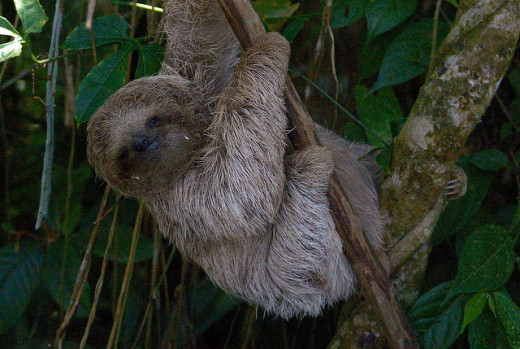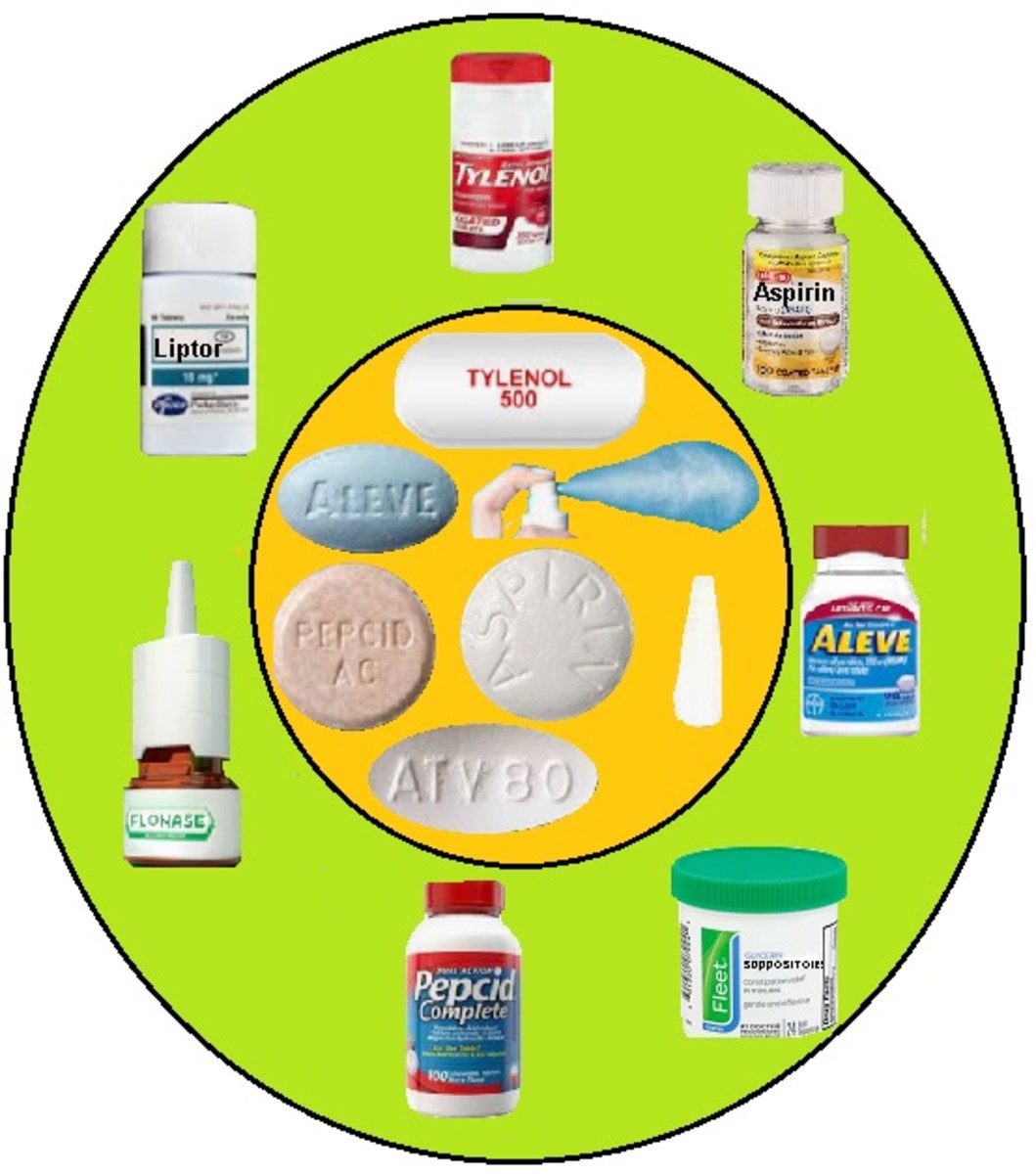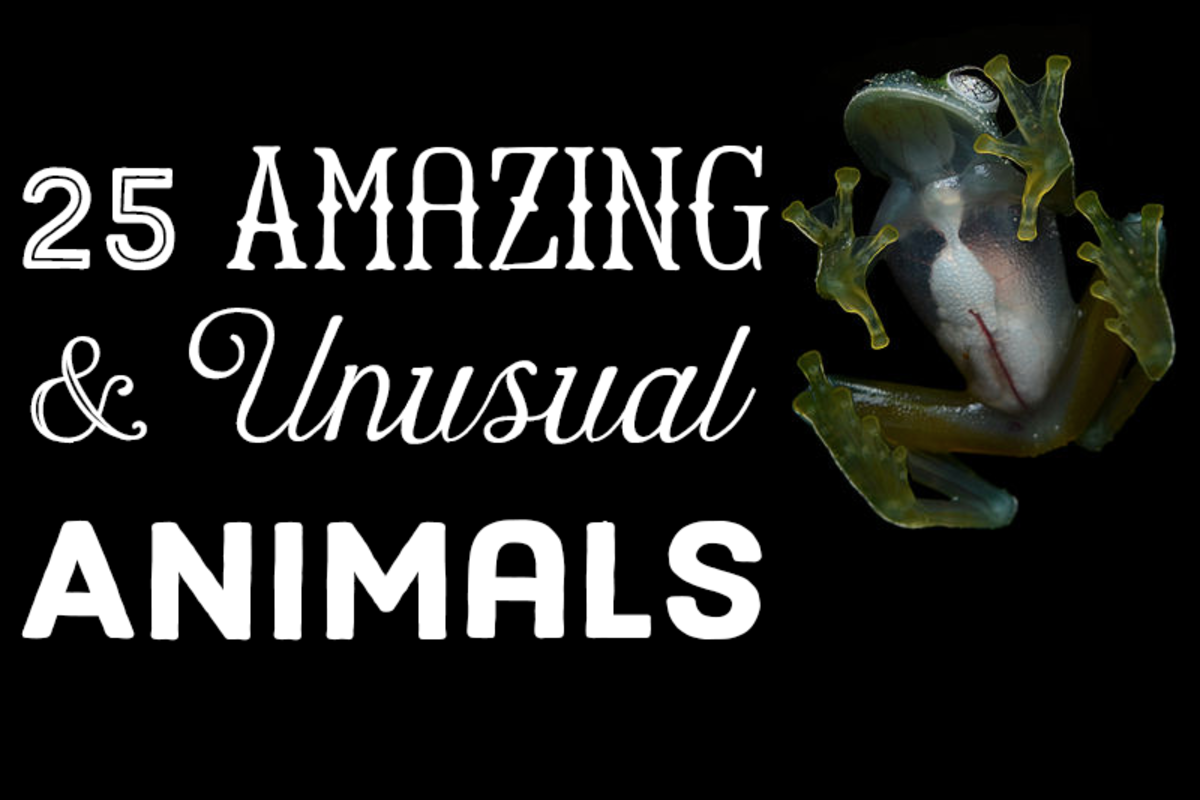- HubPages»
- Health»
- Health Care, Drugs & Insurance»
- Prescription & Over-the-Counter Drugs
Could the Next Wonder Drugs Come From the Sloth?
Sloth a "potential gold mine for drug discovery".

Sloths have contributed much to humanity thus far by simply being sloths. Their name has become literally synonymous with slow moving, and more often laziness which has earned them a namesake among the seven deadly sins. Today they’re one of the most popular animals on the Internet and it looks like their incomparable popularity may have just begun.
The Sloths back, an amazing eco-community of creatures.
Sloths live their lives suspended in the trees of rainforests throughout Central and South America and their fur has been discovered to provide an ecosystem and habitat for a number of organisms. A single sloth may be home to beetles, moths, cockroaches, fungi and algae, only to name a few. This slow moving eco-community has recently been found to harbor secrets that give promise to a variety of new drugs to fight human disease from malaria to breast cancer.
The paper was published by the Journal PLOS (Public Library of Science) and was submitted by lead author Sarah Higginbotham of the Smithsonian Tropical Research Institute. The research suggests that the ecosystem residing within sloth fur contains numerous microbes that have recently been proven to treat diseases and infections that kill millions of people every year. The paper titles the Sloth discovery as “a Novel Source of Fungi with Potent Anti-Parasitic, Anti-Cancer and Anti-Bacterial Bioactivity.” Quite a claim for any initial research article on the findings of new research, although these assertions do appear to be carefully documented and well founded.

What do you think?
As the rainforest's are rapidly being destroyed and species of plants and animals go extinct daily, what will the world do about it?
Microbes specific to sloth fur is a “potential goldmine for drug discovery”.
Seventy-four separate fungi were cultivated from the lower back of nine live three-toed sloths in Soberania National Park in Panama and tested for bioactivity. Researchers from Arizona, California and Panama “found a broad range of in vitro activities of fungi against the pathogens that cause malaria and Chagas disease, as well as against a specific type of human breast cancer cells.” As many as 20 fungal extracts were active against at least one bacterial strain.
The study noted that chemicals isolated from the fungi found on sloths were deadly to parasites that cause malaria. The researchers also found that no less than twenty of the fungi were active when tested against only one strain of bacteria. The paper went further to say that “conservative estimates suggest that the total number of fungal species in existence exceeds 5 million, yet fewer than 100,000 fungal species have been described.”
Popular Science reported on the sloth’s fur study, outlining that these newly discovered fungi could battle “a host of human pathogens”:
“The chemicals excreted by microbes in sloth fur had potent activity against a host of human pathogens, and even breast cancer cells, and possess anti-malaria and antibacterial properties. The study found that chemicals isolated from fungi in three-toed sloths were deadly for parasites that cause malaria.”
These chemicals were found to effectively fight the tropical parasitic Chagas disease. Very few man-made chemicals have been discovered to be even mildly effective against Chagas, and nearly all have been shown to have prohibitively negative side effects. Yet the chemicals secreted from these fungi had completely eradicated the parasite.
Scientists describe the microbes specific to sloth fur as a “potential goldmine for drug discovery” and “suggest a potentially new mode of action” in the scope and effectiveness with which they attack bacteria. In other words, the chemicals in sloths fur attack bacteria differently than other drugs. In addition to demonstrating a new way of eliminating the deadly bacteria the research suggests that the chemicals found were shown to have a potent effect on a host of human pathogens from anti-malaria to antibacterial properties. The discovery could potentially lead to new antibiotics capable of fighting back against the increasing number of resistant strains of bacterial infection.
Some details about sloth's (nothing on sloth algae discovery).
Hidden secrets of the rainforest could play a vital role in our lives.
The scientists noted that while it is impossible to know exactly how the fungi found its way into the sloths fur, they can speculate that it may have a symbiotic relationship with the green algae sloths carry on their back as a convenient food source. In a blog on the PLOS website Kayla Graham said:
“However the fungi ended up in the fur, the authors suggest their presence in the ecosystem provides support for the role biodiversity plays both in the rainforest and potentially our daily lives.”
With any luck, the potential medicinal benefits of sloth fungi should send an enormously important message. If this relatively isolated discovery can potentially save millions of lives, what other miracles might be hidden in the rainforest’s? Surely we cannot afford to risk what is nearly certain to hold the most valuable discoveries of medicine. The lives of millions may depend on our ability to preserve the rainforest’s along with the plants and animals that live there.
The imagination runs wild when you take a moment to consider the potential catastrophe’s that could be avoided, or otherwise be faced. Imagine if antibiotics had never been discovered. Would you be reading this and would I have written it? Chances are better than good that one of us would not be here along with more than half of the people that we both know.
Today we cannot even comprehend the miracle of antibiotics. But if one day they become ineffective, we would no longer take such a cure for granted as we watch many of our loved ones die of disease and infections that are now easily curable. With recent discoveries, we have little if any doubt that the ingredients to thousands of disease fighting drugs remain hidden in the rainforest's. Drugs that could prevent the future suffering, that we are all but certain to face, as the effectiveness of our lifesaving antibiotics diminish as weeks and months go by. Hopefully, we will never wonder if we could have saved our loved ones, if we had only studied the rainforest's enthusiastically, rather than allowing them to be decimated.
It almost sounds like a plot in a horror film. Just as the disease that will ravage the planet and destroy humanity claims its first few victims, the last few plants of the only species holding the cure to save the human race, is mowed over by a bulldozer making way for a new mining operation. It's a short film.
© 2014 Steve Garton








